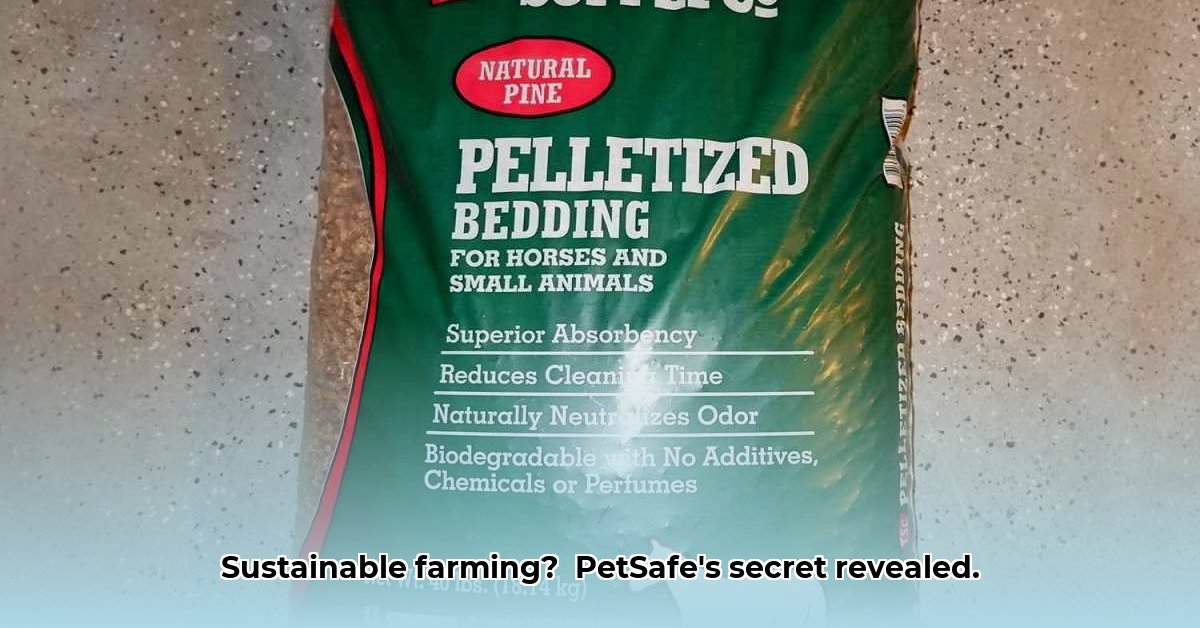
PetSafe Products and Sustainable Agriculture: A Gap Analysis
This report analyzes the potential for PetSafe products, currently used for pet containment, to contribute to sustainable agricultural practices. A comprehensive literature review revealed a significant lack of published research directly connecting PetSafe technologies and sustainable farming methods. This absence of data, however, does not preclude future potential applications. For further information on sustainable agricultural materials, see this helpful resource on greenhouse plastics.
Methods: Literature Review and Technological Assessment
The research methodology involved a thorough review of available literature on sustainable agriculture techniques, precision farming technologies, and PetSafe product specifications. The search encompassed peer-reviewed articles, industry reports, and relevant government publications. This review yielded no direct evidence of PetSafe products' current use in sustainable agriculture.
Results: Absence of Established Connections
Currently, no published research supports a direct link between PetSafe products and sustainable farming practices. This finding underscores a significant gap in existing knowledge.
Discussion: Unmet Potential and Future Research Avenues
While no direct connection currently exists, the core technologies underlying PetSafe's wireless pet containment systems offer potential for adaptation to various agricultural applications. The principles of wireless boundary creation, real-time monitoring, and remote control inherent in these systems hold promise for improvements in several areas of sustainable agriculture.
Precision Livestock Management: Adapting the technology for larger livestock could enable more precise monitoring of animal location, behavior, and health, leading to improved grazing management and reduced environmental impact. Efficient grazing patterns reduce overgrazing and improve pasture health.
Wildlife Management: Wireless systems could create virtual barriers around crops, reducing wildlife damage while minimizing harm to animals. This approach supports biodiversity and reduces the need for harmful pesticides.
Precision Irrigation: Wireless sensors could monitor soil moisture, enabling precise irrigation adjustments and minimizing water waste. Water conservation is a crucial aspect of sustainable farming, particularly in water-scarce regions.
These potential applications are not without challenges. The technology would require adaptation for larger animals, harsher environmental conditions, and integration with existing farm management systems.
Technological Adaptation and Research Needs
Further research is necessary to explore the feasibility and viability of these applications. This research should focus on:
Feasibility Studies: Conduct thorough cost-benefit analyses to evaluate the economic viability of adapting PetSafe-like technologies for various agricultural applications.
Technological Development: Develop robust and scalable wireless systems tailored to the specific needs of agricultural environments, addressing issues like signal range, durability, and power consumption.
Field Testing: Conduct rigorous field trials to assess the effectiveness of these adapted technologies in real-world agricultural settings, gathering data on their performance, reliability, and impact on various farming processes.
Comparative Analysis: Compare the efficiency and economic viability of the proposed adapted systems against existing sustainable agriculture solutions.
Conclusion: A Promising, Unexplored Frontier
The absence of current data highlighting a connection between PetSafe products and sustainable agriculture presents a significant opportunity for future research. While no direct link is currently established, the underlying technology presents considerable potential for innovation. Investing in research and development in the areas outlined above could unlock significant advancements in sustainable agriculture, creating a more efficient, environmentally responsible, and economically viable food production system. This presents a largely uncharted territory of research and development possibilities.